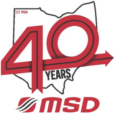December 1, 2013 – One question I always ask trainees when discussing personal protective equipment (PPE) during OSHA 10 hour training classes is whether or not OSHA considers a dust mask to be a respirator. It has been my experience that the vast majority of students in most classes answer “no, it is not”. But the simple answer to that question is “YES, dust masks are considered respirators per the OSHA respiratory protection standard”. However, the steps you must take to comply with that standard can vary greatly, depending on whether the employee’s use of the dust mask is voluntary or mandatory.
Let’s begin by looking at the definitions section of the OSHA respiratory protection standard (1910.134, paragraph b). The first thing you should note is that OSHA has provided definitions for a variety of specific types of respirators, such as “Atmosphere-supplying respirator”, “Demand respirator”, and “Self-contained breathing apparatus (SCBA)”. But I want to draw your attention to the definition for the term “Filtering facepiece”; there you will note the definition includes “dust mask” in parentheses, and then goes on to say it means “a negative pressure particulate respirator with a filter as an integral part of the facepiece or with the entire facepiece composed of the filtering medium.” So that definition alone should clarify for everyone that a dust mask IS considered by OSHA to be a respirator. But if you are still in denial, read this OSHA letter of interpretation about the use of dust masks.
What this means is that all applicable rules in the OSHA respiratory protection standard that apply to the use of respirators would apply to dust masks; with “applicable” being the operative term here. For instance, if a worker must wear a dust mask because he or she is exposed to nuisance dust at a concentration that exceeds the OSHA permissible exposure limit (PEL), or even if the employer decides to make the use of a dust mask mandatory for a certain task, then all elements of the respiratory protection standard must be implemented, per paragraph 1910.134(c)(1). That includes, but is not limited to, the development of a written respiratory protection program with site-specific procedures, a medical evaluation and written clearance for that worker to wear the dust mask, an initial fit test of the dust mask to the user (yes, you can fit test a dust mask), which must be repeated annually, and initial respiratory protection training for users which must also be repeated annually. By the way, if you did not know there were PEL’s for dust exposure, refer to Table Z-3 in 1910.1000 and locate “Inert or Nuisance Dust”.
But what if the use of a dust mask is a voluntary act on the employee’s part, as opposed to a requirement of the employer? If that is the case, then we refer to paragraph 1910.134(c)(2). First of all, subparagraph (2)(i) states that “an employer may provide respirators at the request of employees or permit employees to use their own respirators, if the employer determines that such respirator use will not in itself create a hazard.” That section then goes on to state that “if the employer determines that any voluntary respirator use is permissible, the employer shall provide the respirator users with the information contained in Appendix to this section (“Information for Employees Using Respirators When Not Required Under the Standard”). That means we must ensure that any respirator use will not in itself create a hazard (by ensuring that masks are not used if dirty or contaminated, and that their use does not interfere with the employee’s ability to work safely), plus we must provide the information in Appendix D to any worker who uses any type of respirator, including dust masks, on a voluntary basis.
The standard goes on to further require in subparagraph (c)(ii) that “In addition, the employer must establish and implement those elements of a written respiratory protection program necessary to ensure that any employee using a respirator voluntarily is medically able to use that respirator, and that the respirator is cleaned, stored, and maintained so that its use does not present a health hazard to the user”. So according to that part, we must still implement a written respiratory protection program (albeit an abbreviated version as compared to a full program), and must also have the respirator user receive a medical evaluation and get written clearance to wear the respirator voluntarily, and then we must train the user in applicable cleaning, maintenance, and storage procedures.
However, the standard continues with the following footnote; “Exception: Employers are not required to include in a written respiratory protection program those employees whose only use of respirators involves the voluntary use of filtering facepieces (dust masks)”. Unfortunately, I find that many employers (and employees) see this exception and mistakenly surmise that dust masks are not covered at all by OSHA. If you read this excerpt carefully, you will see that it does excuse the employer from having to develop a written respiratory protection program if the only voluntary use of respirators by their workers is dust masks. This footnote also excuses the employer from having to get a medical clearance for the worker using a dust mask voluntarily, as well as the training requirements spelled out in subparagraph (2)(ii). BUT, this exception does NOT excuse the employer from the requirement that they present the voluntary user of a dust mask with the information in Appendix D of the OSHA respiratory protection standard.
So, to recap; the use of any type of respirator, including a dust mask, that is mandatory because of employer requirements or because of worker exposure to a respiratory hazard exceeds OSHA PEL’s would require the employer to implement all of the elements of a full respiratory protection program. However, if the use of a respirator is voluntary, the actions of the employer will depend on whether the respirator is a dust mask or some other type of respirator. If the respirator is not a dust mask type, the employer must present the voluntary user with the information appearing in Appendix D of the OSHA respirator standard. They must also implement an abbreviated written program, have the employee receive medical clearance to wear the respirator, and give training to that worker on cleaning, maintenance, and storage of their device. But if the voluntary use of the respirator is restricted to a dust mask, then the only requirement is to present the worker with the information in Appendix D.
By the way, it is important to note that even though the 1910.134 OSHA respiratory protection standard being discussed in this blog is a general industry standard, it also applies to all other work environments covered by OSHA (construction, maritime, and agricultural).
I’ve always said that when it comes to understanding OSHA regulations, the devil is in the details. And that is why it is so important to read the definition section of OSHA standards (see related blog post). Otherwise, you might fall into that group of people who do not know the correct answer to the simple question; “Are dust masks considered respirators?” But more importantly, you would miss the details that spell out which step(s) you must implement to be in compliance with applicable portions of the OSHA respiratory protection standard that are related to voluntary respirator use.
If you have questions or comments you would like to share with readers on this topic, please enter that information in the “Comments” section by clicking here and then scrolling down the page to the “Comments” box. And last but not least, I encourage you to Share This Blog Post with Others in Your Network who might benefit from reading this post.
Author: Curtis Chambers, MS-OSH, CSP
2020
- 301 citations
- $3,930,381 fines issued
- Citation trends:
- 134 (c)(1) – Written Respiratory Program
- 134 (e)(1) – Medical Evaluations
- 4 (a) – Recordkeeping
- 134 (f)(2) – Fit Testing
- 134 (a)(2) – Providing Respirators
In 2020 OSHA issued nearly $4,000,000 in citations related to Covid-19. Most of which related to respiratory programs or the lack there of. You must be careful as to what your employees are wearing as face coverings. If what they are wearing falls under the OSHA definition of a respirator, you must follow respiratory standard. In some instances, even a simple dust mask can fall into this category as stated in the article above.
Good luck and stay safe!!



